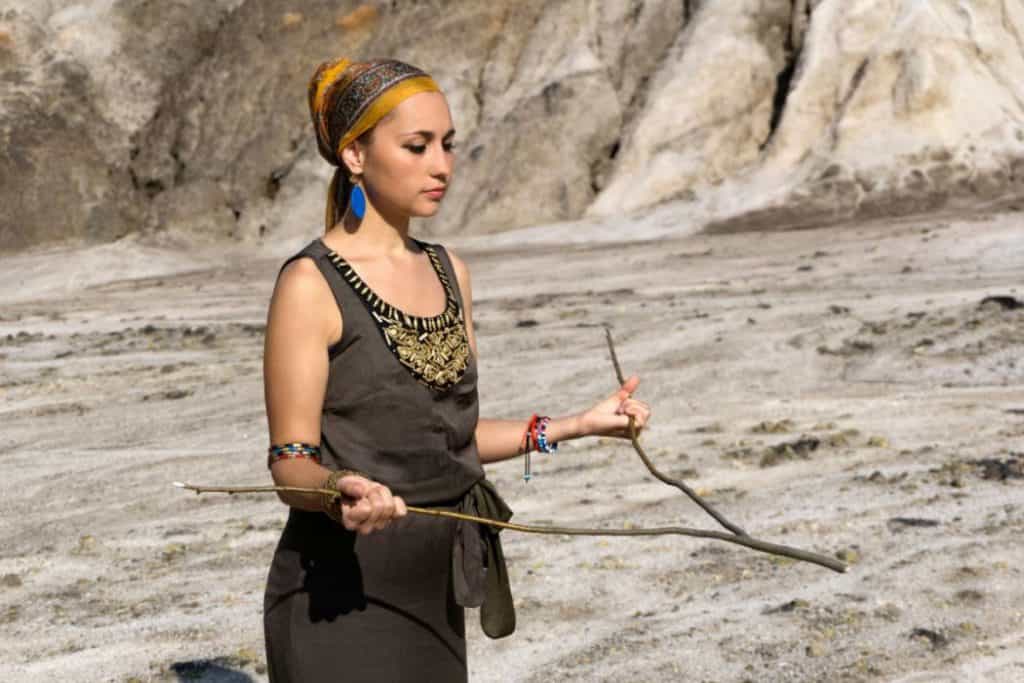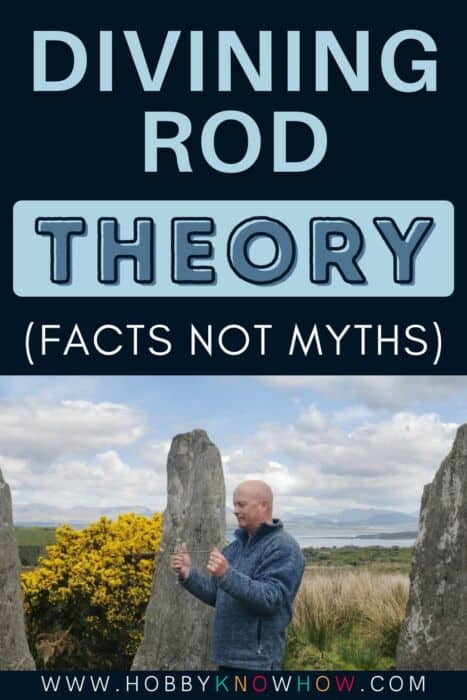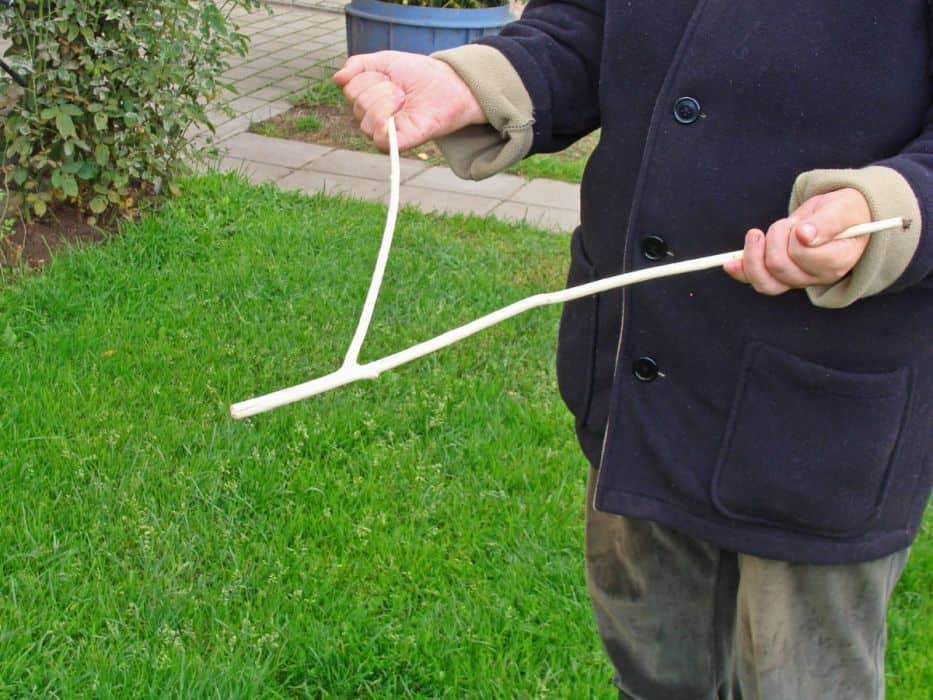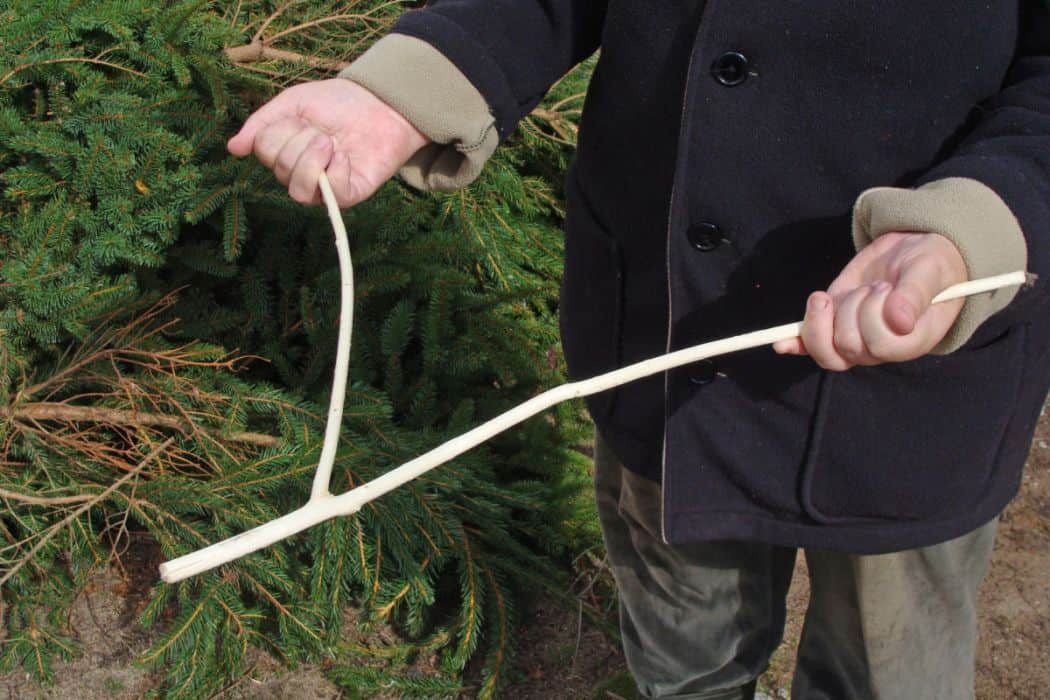The first time you see someone use a divining rod (or dowsing rod) to hunt for water you’ll probably think they are a little crazy.
But if you watch long enough, and maybe even ask to “run the rod” yourself for a little while, the odds are pretty good that you’ll become a believer in a hurry.
Sure, the ancient art of divining water has had its fair share of skeptics for literally thousands and thousands of years – and modern scientists and researchers still aren’t quite sure of what to make of this practice.
And that’s with a pile of scientific evidence to back up the fact that divining rods really work and it is possible to dowse for water!
When you look at the divining rod theory, though, and recognize that even researchers that believe in the power of dowsing for water still aren’t quite sure of how or why it works it’s not hard to understand that skepticism.
Below we dig a little bit deeper into the ins and outs of this theory and cover some of the evidence that backs up and confirms the effectiveness of dowsing, too.
Let’s jump right in!
A Quick Look at the History of Divining Water
The ancient art of dowsing has been a part of human civilization ever since humans started to hunt and dig for water.
The current earliest known record of human beings dowsing exists in the northern portion of Africa.
A number of cave paintings were discovered by French team of explorers and archaeologists hunting for lost civilizations in the region. They came upon a system of caves (later known the Tassili Caves) absolutely covered in prehistoric paintings and ancient art.

One of the paintings prominently shows an individual holding a forked branch hunting for water, surrounded by a number of tribes people that are celebrating their discovery and the water that it inevitably brings forth.
There are examples of ancients dowsing throughout history all over the world, too. There’s a Chinese etching more than 25,000 years old that show and ancient emperor holding a dowsing rod, just as there are etchings and paintings in temples, churches, and ruins throughout the Middle East and parts of Europe featuring these tools as well.

A number of passages in the Bible speak about dowsers and the power that they have to find water, as do the ancient Greeks, the ancient Romans, and more modern European ancestors, too.
In 1400s dowsing really took off throughout Europe and it wasn’t long after that that early settlers in the New World of America were using this “technology” to do the same.
Today there are societies all over the world maintaining the skills in history of dowsing, with many of them working with scientific researchers the world over to conclusively prove the effectiveness and efficacy of this ability once thought to be witchcraft.
How Does Diving Water Really Work?
As highlighted earlier, even there are hard-core proponents of the effectiveness of dowsing and divining water even the most evangelical dowsers still aren’t quite sure of the why behind how this process works in the first place.
A general theory of dowsing has changed and evolved over time, with our most ancient ancestors simply believing it to be a “get from the gods” and a bit like magic.
More modern theories involve tapping into the subconscious mind and the shared consciousness of the world to find water, using our psychological powers to (without even being aware of it) move and manipulate dowsing rods until we locate water under our feet.
Some believe that dowsing is effectively an ideomotor movement tied to our expectation of discovering something, speaking more to the power of suggestion and our subconscious mind more than anything else.

Of course, some in the geological community are a little more dismissive of divining water and dowsing in general and have a totally different take on the theory of why this practice works.
These “nonbelievers” aren’t the impression that dowsers operate in areas where groundwater is so prevalent that it would be almost impossible not to run a well down into the ground and discover water no matter where you stood or “found” its source.
In 1990 German researchers conducted a 10 year experiment using dowsers in places like Sri Lanka, Kenya, and Yemen (notoriously dry locales without a lot of surface water available) – and in Sri Lanka alone the dowsers had a 96% success rate when discovering (later drilling) almost 700 wells.
Whether or not that lends credence to the power of dowsing or backs up the theory of geologists that groundwater is incredibly prevalent and can be found anywhere is entirely up to an individual’s belief or disbelief in whether or not divining water is the “real deal”.
The only way to know for sure where you land on that spectrum is to grab a divining rod and give it a shot for yourself!





